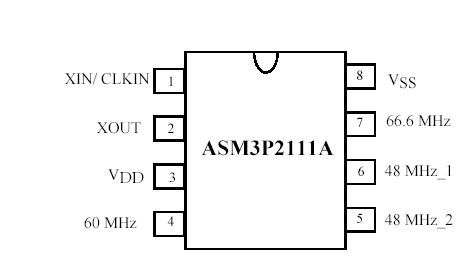ASM3P2111A: Features: Generates an EMI optimized clocking signal at output.Input frequency 25 MHz.Frequency outputs: o 60 MHz (unmodulated) o 2 x 48 MHz (unmodulated) o 66.6 MHz (modulated) -1.7% down spread M...
floor Price/Ceiling Price
- Part Number:
- ASM3P2111A
- Supply Ability:
- 5000
Price Break
- Qty
- 1~5000
- Unit Price
- Negotiable
- Processing time
- 15 Days
SeekIC Buyer Protection PLUS - newly updated for 2013!
- Escrow Protection.
- Guaranteed refunds.
- Secure payments.
- Learn more >>
Month Sales
268 Transactions
Payment Methods
All payment methods are secure and covered by SeekIC Buyer Protection PLUS.

 ASM3P2111A Data Sheet
ASM3P2111A Data Sheet







